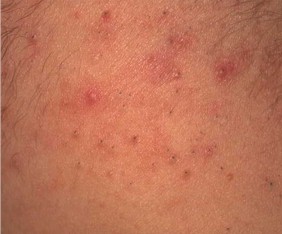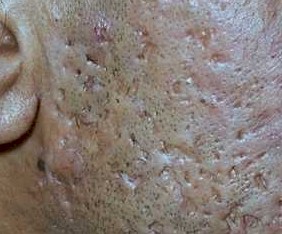
WELCOME TO ACNE GROUP ORG
THE ACNE GROUP is dedicated to providing accurate, reliable information on the treatment of acne, acne skin care and eliminating acne. Believe it or not, acne IS a skin disorder! Everyone seems to have acne and everyone seems to suffer from it.
- 1) Abnormal blocking of the sweat and hair follicle caused by too much androgen production in teenagers and by stress in those with adult acne.
- 2) A greater production of oil by the sebaceous glands.
- 3)And the abundance of common bacteria that all humans have.
ACNE RELATED SKIN CONDITIONS:
1)Rosacea: Acne and rosacea are two unrelated skin conditions. However, the two do co-exist together on the patients skin just as acne and psoriasis or acne and eczema and many other skin conditions that also appear together. Adult acne and rosacea are often seen on approximately 80% of patients and varies from mild to severe acne. Rosacea and acne are quite different as rosacea is a red face in the mild forms and has many stages. However, acne is red pus filled bumps that vary from mild to severe.
Clogged skin pores and bacterial infections cause acne. The blackheads, whiteheads and pimples are all different forms of acne and sometimes appear with rosacea or combined skin disorders appearing at the same time. Rosacea consists of red bumps called papules. The papules and pustules that occur in rosacea may look like typical acne, but closer observation by a trained physician reveals the absence of whiteheads and blackheads. In rosacea, the pimples and cysts rarely appear on the chest and back.
2)Seborrheic Dermatitis: Seborrheic dermatitis is very painful sensitive skin when on the face. When it is on the scalp it is called dandruff and had little or no pain as the scalp has very few pain sensors or nerve endings. Many people bump their heads for years with very little problem. Seborrheic dermatitis is an itch red area on the facial skin and on other places of the body. Most often, seborrheic dermatitis is on the facial area along with rosacea. It involves overactive sebaceous glands and scaly flaky skin. Whereas, the scaling skin on the eyelids of ocular rosacea.
is sometimes confused with it.Pictures are shown as follows to illustrate the severe skin conditions:

ACNE COMEDONICA

ACNE VULGARIS

ACNE SCARRING
Look further into the Acne Group for more information on acne, acne treatments, the cause of acne, etc.
Article of the Week:
Adult AcneAdult acne affects 25% of all adult men and 50% of adult women at some time in their adult lives. Often people can develop acne or have an acne recurrence in their 30s, 40s and beyond. It can be difficult to cope with no matter your age, and can cause depression and social anxiety in an adult the same way it can in a teen. Although the cause of adult acne is unknown, it is thought that adult acne may sometimes have hormonal roots.
Site Map